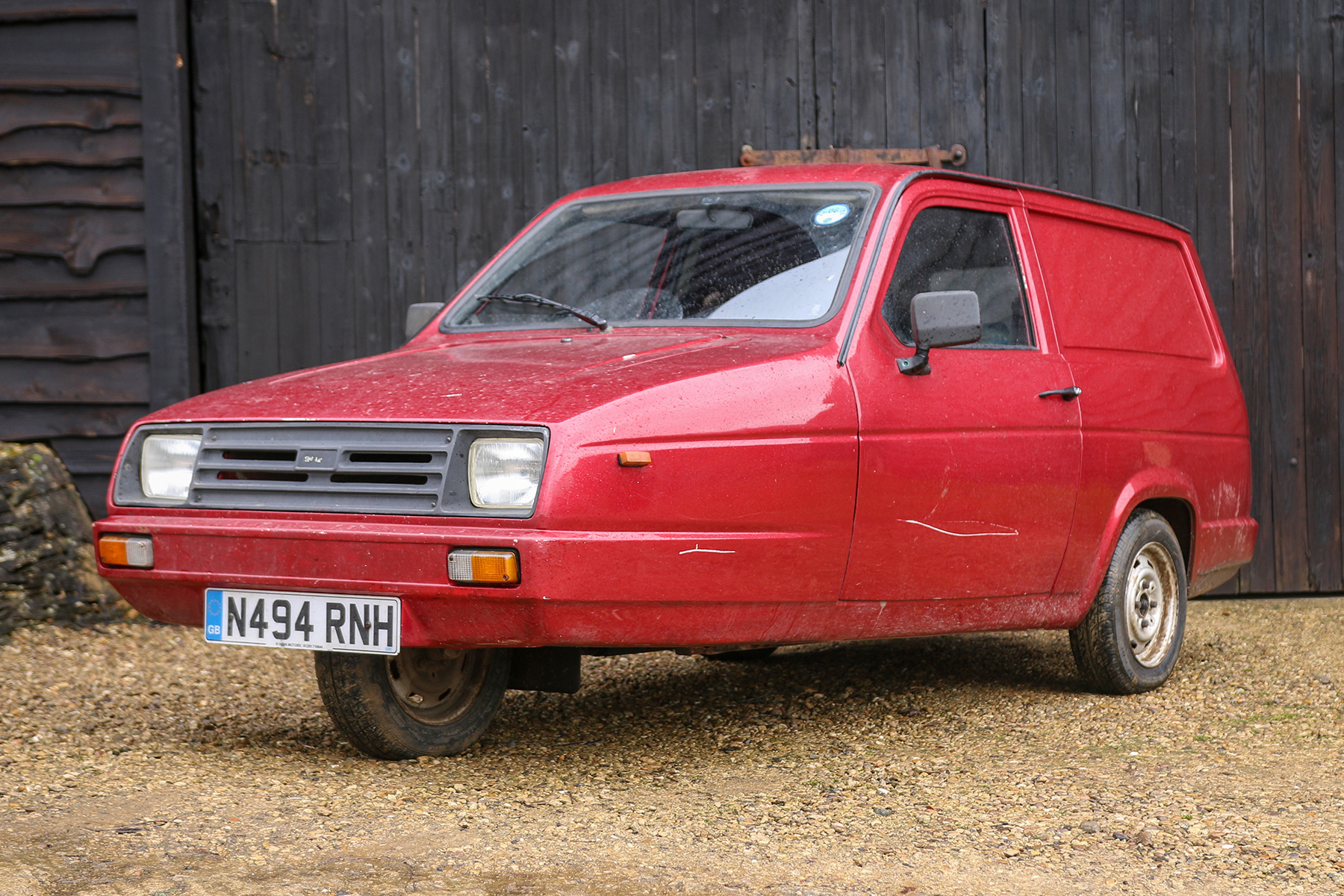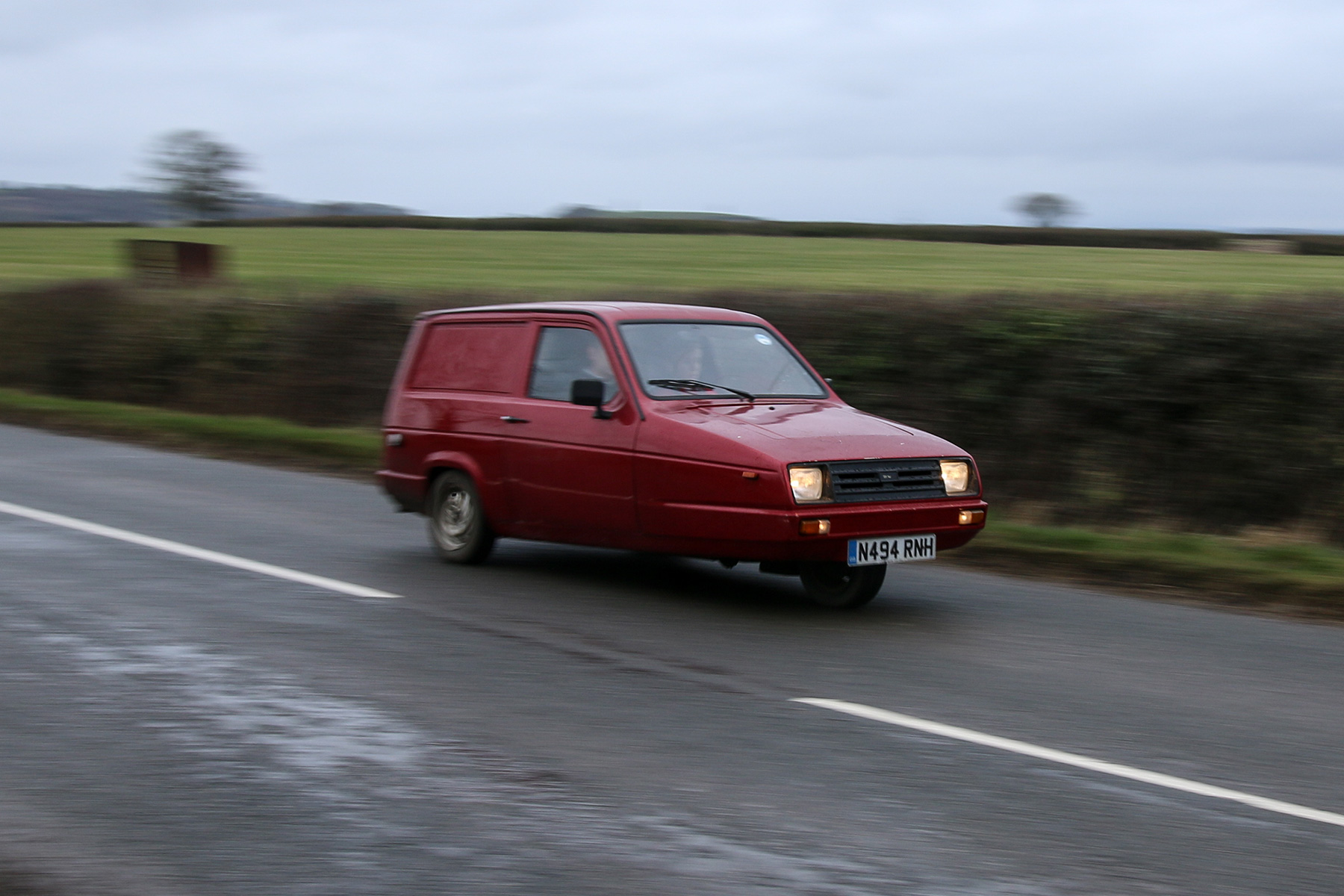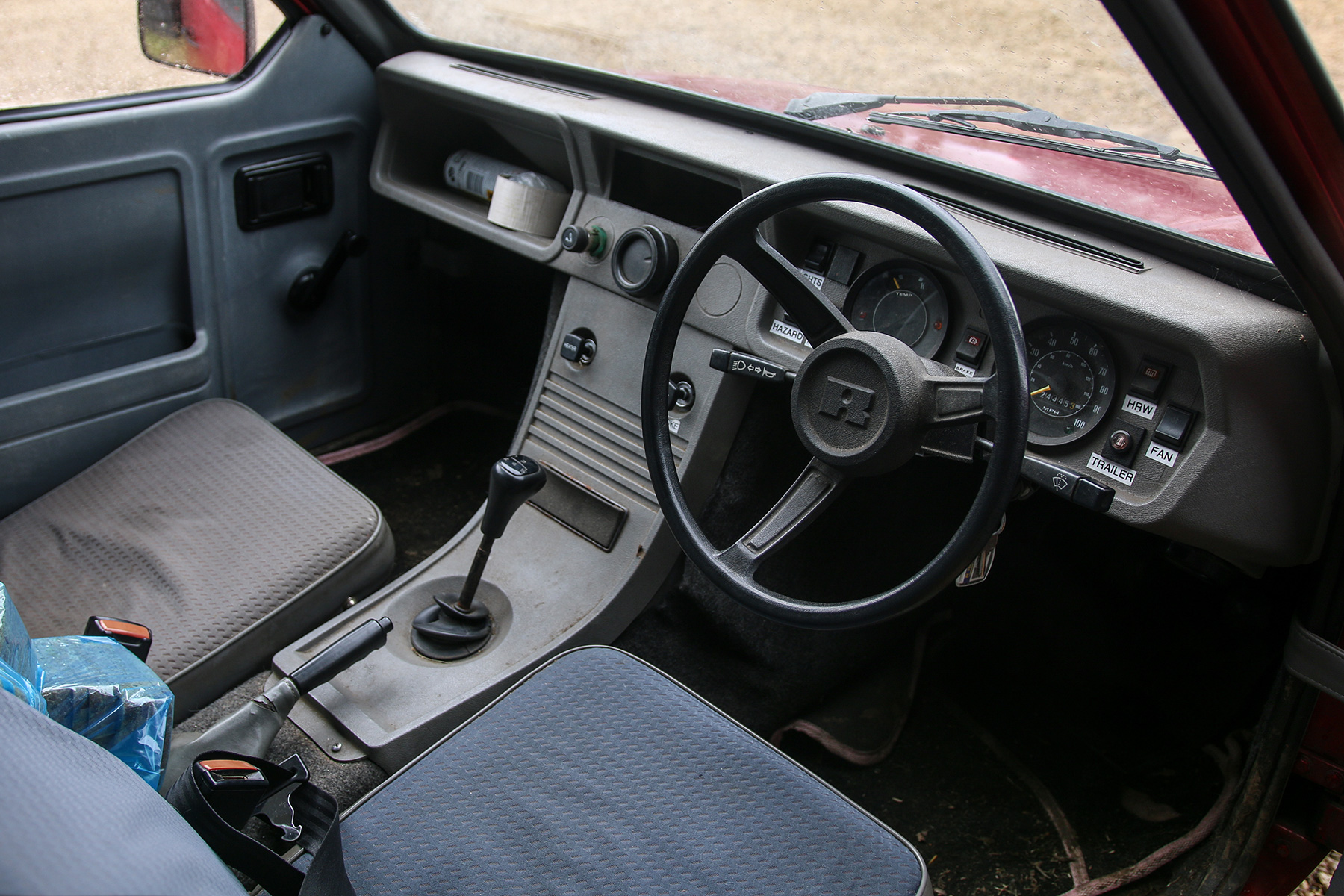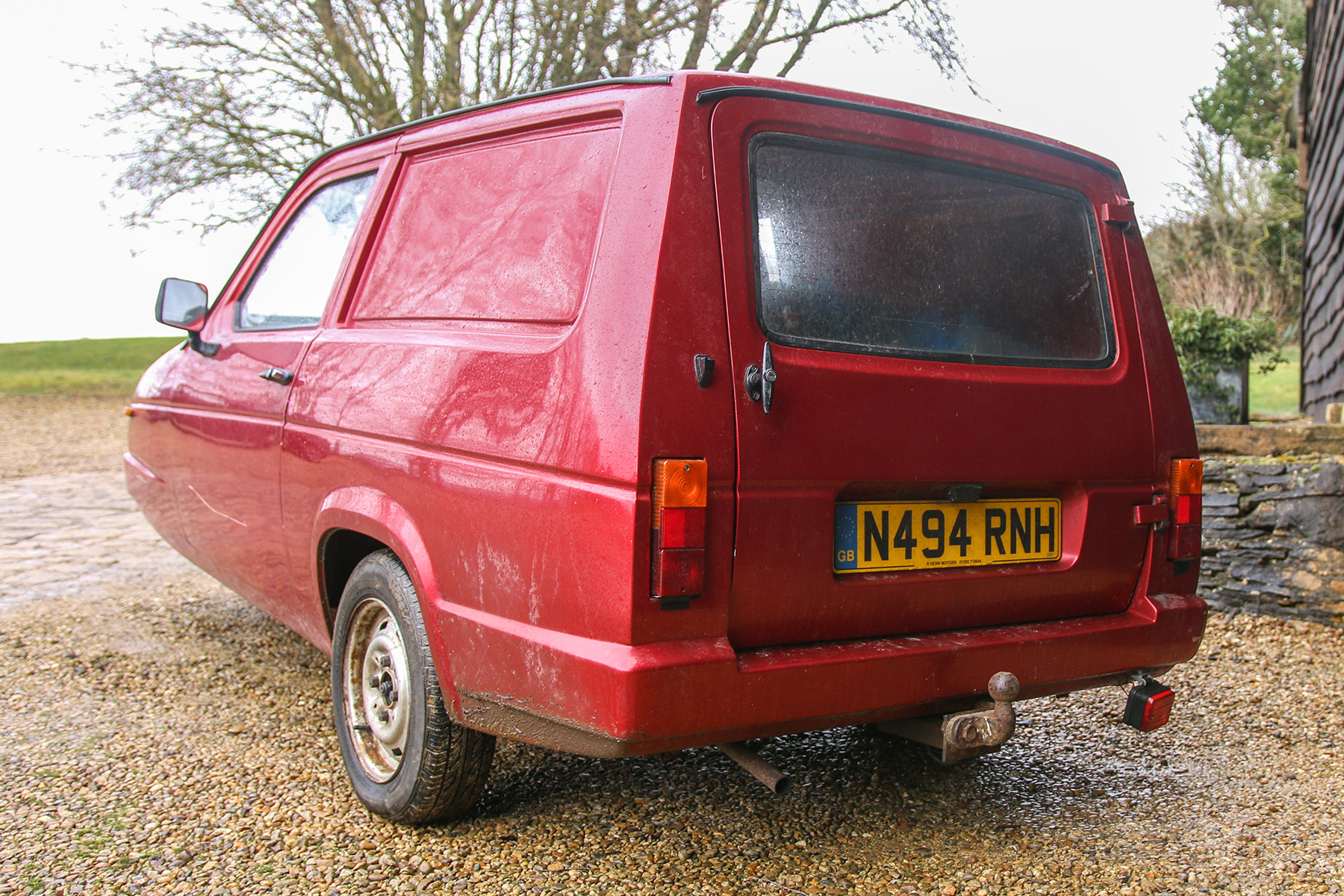
I’ve developed a borderline unhealthy obsession with three-wheeled Reliants. I’m not sure what triggered it: too long on the Reliant Owners Club stand at the NEC Classic Motor Show, perhaps, or an enjoyable read of Giles Chapman’s book on the Reliant Robin.
I even found myself exploring the housing estates of Tamworth in an attempt to find signs of the old factory, and I’ve wasted more time than I’d like to admit watching videos of Reliants cornering enthusiastically. And that’s before I confess to owning the Only Fools and Horses boxset.
Surprisingly, I have managed to resist buying one. I’ve come close to it, admittedly, with a few ill-judged eBay bids here and there, but I’m yet to part with cash for a ‘plastic pig’. I’d even made it until now without driving one.
Fast-forward to an out-of-the-blue email from friend of Motoring Research and former Peugeot 205 Rallye and Honda Integra Type R owner, Nick Bailey of Elan PR. Nick knew of a Reliant Robin, and its owner would be very keen for me to drive it.
A date was arranged (on Valentine’s Day, no less) and I travelled to Oxfordshire, with some trepidation, to find out exactly what a Reliant is like to drive.
What’s is a Rialto like to drive?

Without wishing to get pedantic, this isn’t actually a Reliant Robin. By the late 1970s, Reliant was in trouble. A recall of 25,000 Robins led to an image crisis for the three-wheeled car, and the recession that followed didn’t result in the sales boom the cheap-and-cheerful motor should have enjoyed.
As a result, the Robin name was dropped, in a bid to disassociate the Reliant three-wheeler from its tarnished image. At the same time, a refreshed look by International Automotive Design (IAD) of Sussex was introduced.
More angular than its predecessor, with a plastic grille on the front and headlights borrowed from the Austin Metro, the Rialto was economy motoring for the 1980s. The Rialto featured here is the van version, meaning the rear end is similar to the old Robin, square-topped wheelarches aside.
To be honest, part of my enthusiasm for driving the Reliant was to get it out of my system. Friends told me it’d be rubbish, and a spin around the block in one would put me off ever wanting to spend actual, real money on one. And, as I approached my first junction at the wheel of the Rialto on a wet and windy day, it certainly tested my enthusiasm.
In short, it conked out, and required a push to get it going again. Fortunately, its incredibly light kerb weight of 436kg made easy work of a bump-start.
However, once the engine was up to temperature and I’d learnt the quirks of its manual choke, the 850cc Reliant ran like a charm. I didn’t have the pleasure of driving it around town, but I imagine it’d feel rather zippy.
It’s certainly quick enough up to around 30mph, but above that that things require a bit more commitment. During my drive I found that around 40mph is where the Rialto feels most comfortable on open roads, although its owner assured me that the speedometer under-reads.
Of course, we all know that a Reliant won’t be fast in a straight line (officially, it hits 62mph in around 16 seconds), but it’s the idea of how a three-wheeler handles corners that has partly fuelled my obsession with the plastic pig.
In his Top Gear days, Jeremy Clarkson drove a fairly late Reliant Robin (the name was reintroduced later in the car’s history) and tipped it onto its side at every corner – something he later admitted was caused by the TV show’s mechanics fiddling with the car’s differential.
And yes, cornering at speed with only three wheels is a little scary. During one run for the camera, I almost nodded off by driving uphill with my foot to the floor for what seemed like an age. Approaching a corner at the top of the hill, I only realised I should probably brake before the bend when my passenger started bracing himself against the side of the car…
I got through the corner without binning it, though. The sensation is a weird one – I’ve never ridden a motorbike, but I guess it’s half-way between that and driving a conventional, four-wheeled car. Too long spent reading up on Reliants suggests they’ll drift before they roll over, but I didn’t Retro Road Test this one hard enough to find out.
There’s a lot of body-roll, naturally, but there’s also a lot of satisfaction to be had in hustling along a somewhat inappropriate vehicle. A bus driver travelling in the opposite direction agreed: at first I was worried that he was beeping out of anger at my stupidity, but his thumbs-up and cheery smile egged me on still further.
I couldn’t resist chucking it into a 90-degree turn as my confidence was building towards the end of the drive. Photographer Bradley, following behind, insists a rear wheel was wagged in the air. Time to quit while I’m ahead, perhaps…
Tell me about buying a Rialto

If you’ve read this far, hopefully you won’t think I’m entirely mad in suggesting a Reliant Rialto could be the perfect entry into classic car ownership. Prices aren’t as low as they once were – you’ll need around £1,500 for a fairly respectable, MOT’d example – but that’s pocket money for a car that gets the amount of attention the three-wheeler does.
The later the Reliant, the better the build quality should be, and obviously it’s easier to find good examples of newer models. Personally, nothing is more off-putting than a Robin or Rialto given a comedy paint job – they’re regularly modified for banger rallies and the like, and such examples won’t have had the easiest of lives. And don’t get me started on all the poor Robins given the ‘Trotter’s Independent Traders’ treatment (Del Boy’s vehicle was actually a Reliant Supervan, based on the Regal).
No, I’d be looking for a tidy, original example, ideally being sold by a member of the Reliant Owners’ Club. Although the fibreglass body doesn’t rust, the chassis underneath does, so get on your hands and knees to give it a thorough inspection.
Mechanically, Reliants are pretty tough, but many have been neglected, so a folder of receipts and an enthusiastic seller is a good sign. Clutches are fairly easy and cheap to replace, but they’re a relatively common issue. The same can be said for head gaskets, so look out for signs of overheating and ‘mayonnaise’ in the header tank.
Reliant Rialto: Verdict

Yes, despite driving one, I still want a Reliant three-wheeler. And that’s about as conclusive a verdict you can ask for.
The Reliant Rialto was a laughing stock when it was new, and it still is today. It’s not a car you should buy if you don’t want to be pointed at driving down the high street, and many people will question your logic in choosing one. It’s not a car for long journeys, either, nor would I want to drive a Rialto every day.
But I’d argue that it’s the most fun you can have in a classic car on a (very) limited budget. Buying and running costs are low, and there’s a lively enthusiast scene to help keep your Reliant on the road. You may or may not ‘get’ the appeal, but there certainly is an appeal here somewhere.


